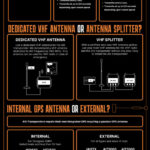
When it comes to marine safety, an Automatic Identification System (AIS) is one of the most important items of marine electronics you should add to your boat’s setup. Whether you’re sailing along the coast with friends, entering busy harbours or out on the sea for commercial reasons, AIS helps you see and be seen, avoid collisions, and stay informed about surrounding vessel traffic.
But what exactly is AIS, and which type is right for your boat? Here is a quick guide on everything you need to know.
What is AIS and why is it Important?
An Automatic Identification System is a marine safety system that broadcasts the position of your vessel, speed, and identity to other nearby boats and lets you receive the same information in return. It really can enhance your situational awareness, especially in poor visibility or high-traffic areas.
Benefits of having AIS onboard
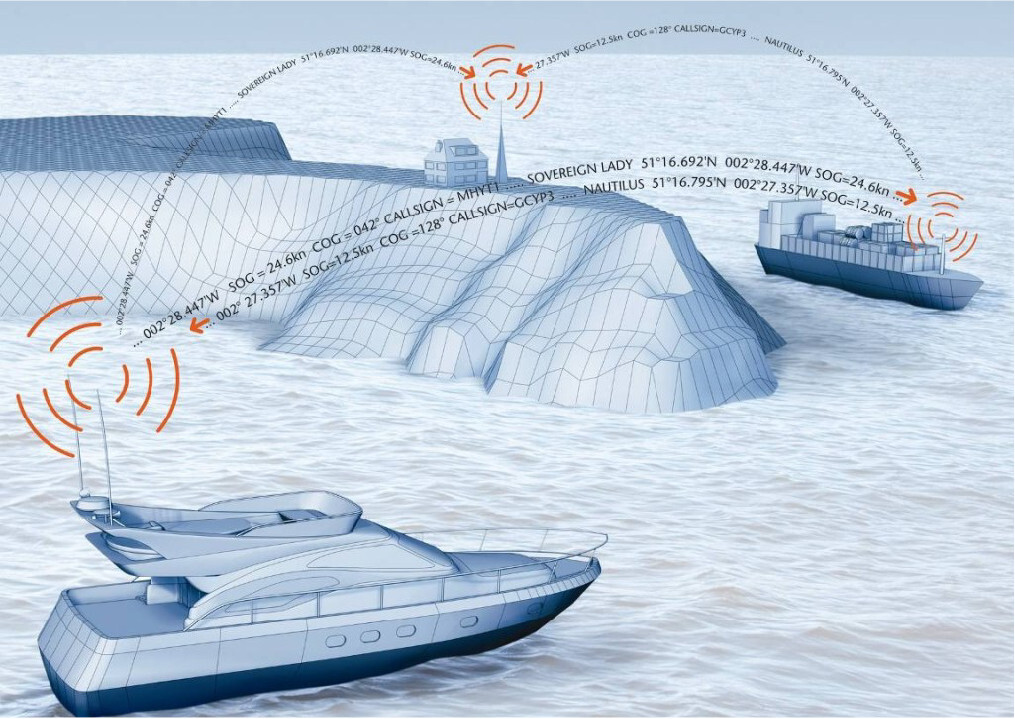
- Be seen at sea: Other vessels can see your position, speed, and heading.
- Avoid collisions: Track nearby AIS-equipped vessels in real time. you can also set up CPA and TPA alarms click here for more information.
- Identify vessels: Instantly see names, MMSI numbers, and vessel types.
Types of AIS Transponders
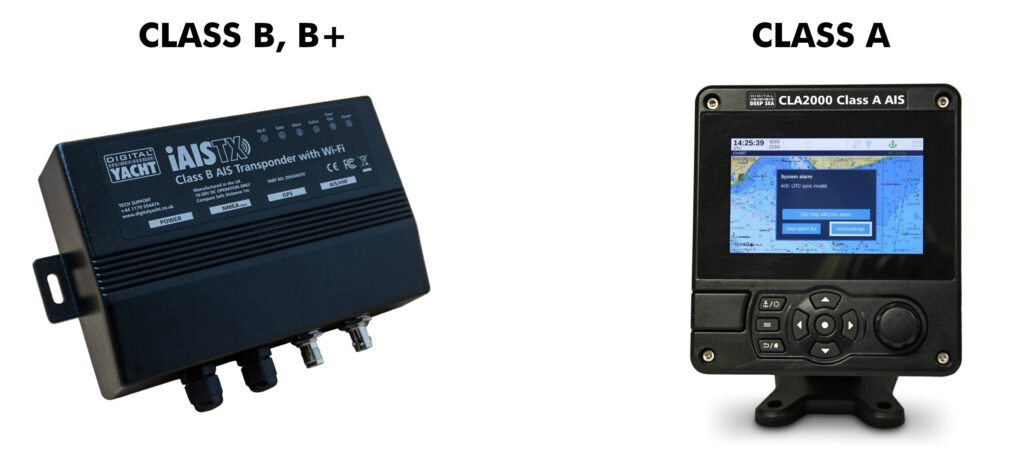
There are three main types of Automatic Identification System transponders, and choosing the right one depends on the size of your vessel , the use, and material.
- Class B AIS transponder is designed for recreational boats. It is a lower-powered transceiver with 2W output. It can transmit (every 30 seconds) the position of your vessel, regardless of the speed of your vessel.
- Class B+ AIS Transponder (also known as Class B SOTDMA) is the latest AIS standard. It offers a 5W power output which is 2.5 times more powerful than a standard Class B AIS and it provides a guaranteed time slot for transmission in high-traffic areas. It’s ideal for motor boats that may move fast, as the update rate increases as the vessel moves faster
- Class A AIS Transponder is required for commercial users. It transmits at a high power output of 12.5W. The transmission rate can be as frequent as every 2 seconds, depending on the speed of your vessel.
Choosing the right VHF Antenna setup
AIS transponders require a VHF antenna to transmit and receive signals. You have two main options.
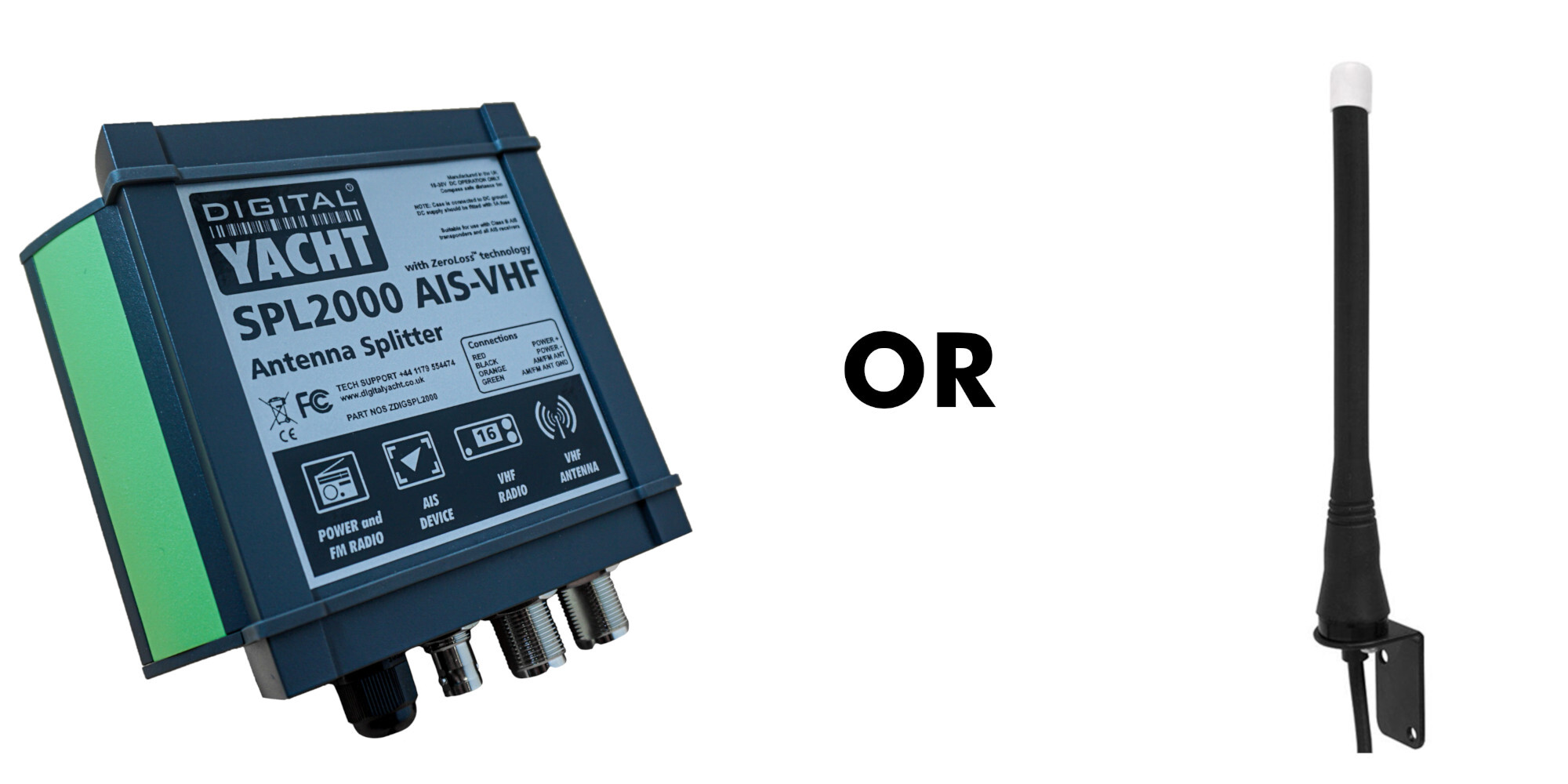
Dedicated VHF Antenna vs. VHF Splitter
You can either use a dedicated VHF antenna, we recommend a VHF antenna with dedicated AIS frequencies ( 162MHz) . The benefit of this, is that this VHF antenna can double as a VHF radio antenna in emergencies.
The other option is to use a VHF splitter. Using a VHF splitter will give you a better range but is is more expensive than a dedicated VHF antenna. With a splitter, you can share your boat’s existing VHF antenna With a certified zero loss VHF antenna for the VHF radio and AIS transponder without any loss. We recommended our SPL1500, SPL2000 for this.
Our AIT5000 is our most complete AIS transponder as it comes with a built-in VHF splitter!
For more information on this subject feel free to read our dedicated article which explores this subject in more depth here.
Internal or external GPS antenna
AIS transponders use a passive GPS antenna, unlike chartplotters which typically rely on active GPS antennas. These two systems can also target different satellite constellations, so the GPS signal quality may vary between them. Because of this, it’s always better to use an external GPS antenna with an AIS to achieve the most accurate and reliable position data. This is critical, as if an AIS does not receive a proper GPS signal, it cannot transmit your position.
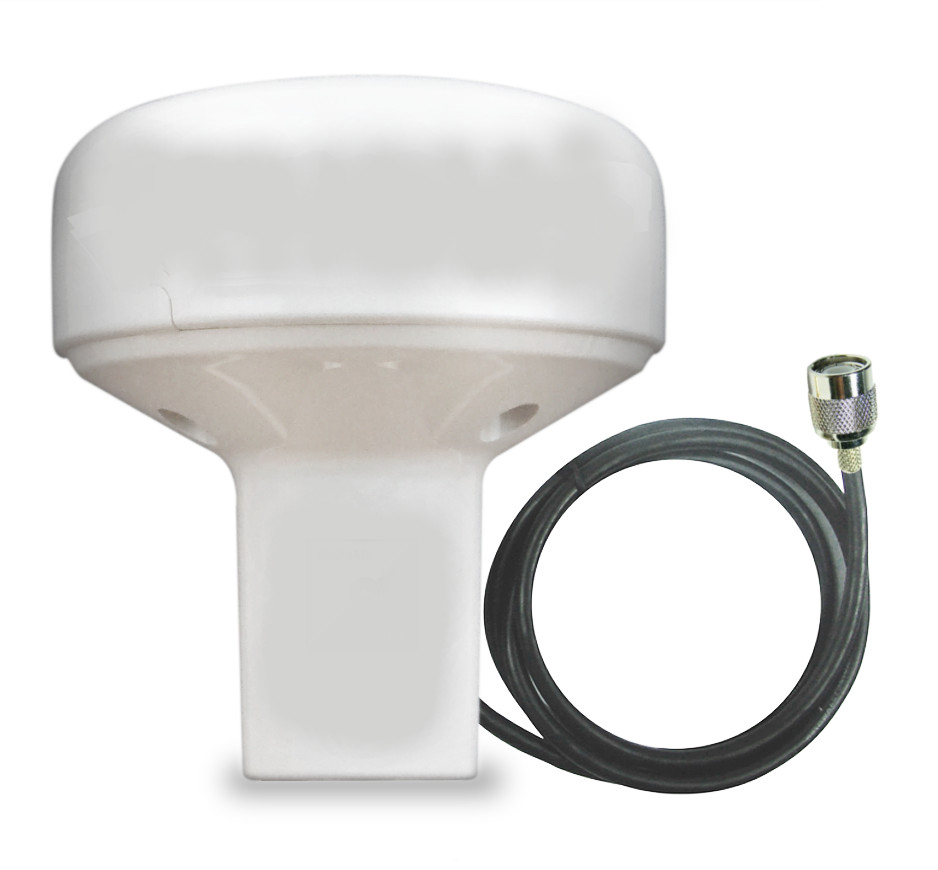
At Digital Yacht, all of our AIS units are supplied with a dedicated GPS antenna to guarantee optimal performance.
Where to display AIS Targets
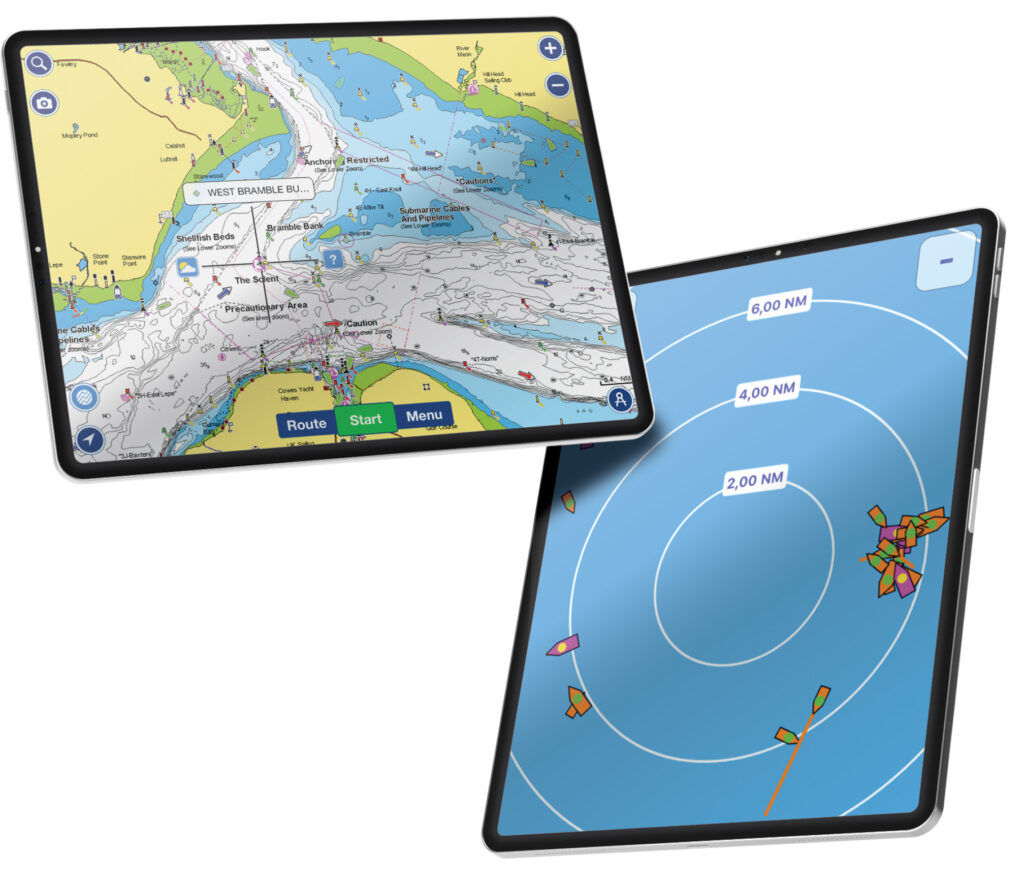
You can display AIS targets on your NMEA 0183 or NMEA 2000 chartplotter, as well as on your tablet or PC.
Digital Yacht AIS transponders are designed for seamless integration with all leading chartplotter brands, including Garmin, Raymarine, B&G, Humminbird, Furuno, Lowrance, Simrad, and more. With standard NMEA 0183 or NMEA 2000 interfaces, they easily transmit AIS target data to your onboard navigation system—regardless of the manufacturer. Whether you’re upgrading an existing setup or building a new system, Digital Yacht ensures compatibility and reliable AIS performance across the board.
Now, there are a lot apps and navigation software available, which can further enhance your AIS navigation system. Some of the popular ones include TZ iBoat, Navionics, AquaMap, Navimetrix, etc. These can all display AIS targets but also calculate collision alarms based on the AIS targets. All very useful tools!
To receive AIS targets on a navigation apps or software, you must chose an AIS transponder with WiFi (iAISTX, AIT5000, Nomad 2).
Which Digital Yacht AIS Transponder
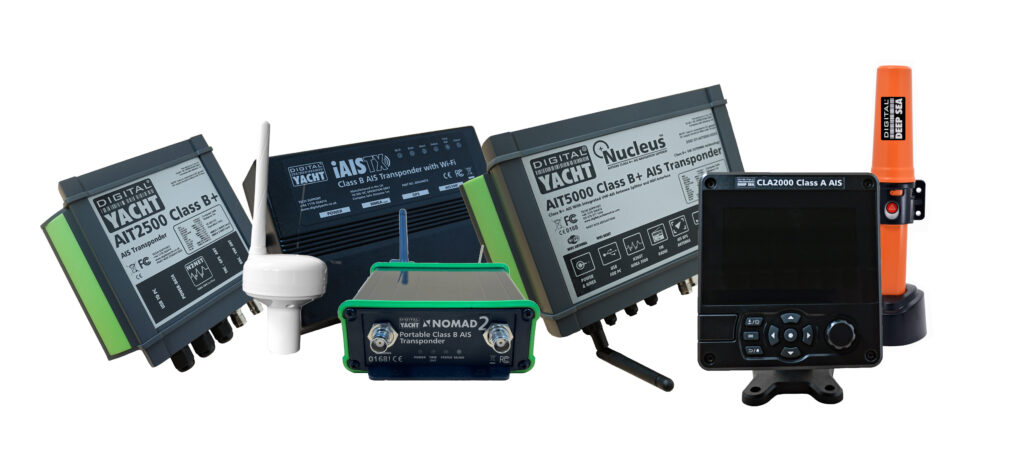
Here is a table to help you choose between our current models
| Features | iAISTX & iAISTX Plus | AIT2500 | AIT5000 | Nomad2 | AIB1000 | CLA2000 |
| Type of AIS & Transmit Power | 5W Class B+ | 5W Class B+ | 5W Class B+ | 5W Class B+ | 2W Class B | 12.5W Class A |
| Transmit Rate | Up to every 5 secs | Up to every 5 secs | Up to every 5 secs | Up to every 5 secs | Every 30secs | Up to every 2secs |
| Guaranteed Time Slot Allocation | Yes | Yes | Yes | Yes | No | Yes |
| Voyage Data | No | No | No | No | No | Yes |
| Power Supply | 12/24V | 12/24V | 12/24V | Cigarette Lighter Plug | Internal Battery or 12/24V | 12/24V |
| External or Built-in GPS | External GPS | External GPS | External GPS | External GPS | Built-in GPS | External GPS |
| Built-in VHF Splitter | No | No | Yes | No | No | No |
| NMEA 2000 | Yes for Plus Version | Yes | Yes | No | No | Yes |
| NMEA 0183 | No | Yes | Yes | No | No | Yes |
| Wi-Fi | Yes | No | Yes | Yes | No | Yes |
You want to find out more about AIS? Please check out our podcast below.
Still not sure?
Get in contact with our team and we will be happy to help !





